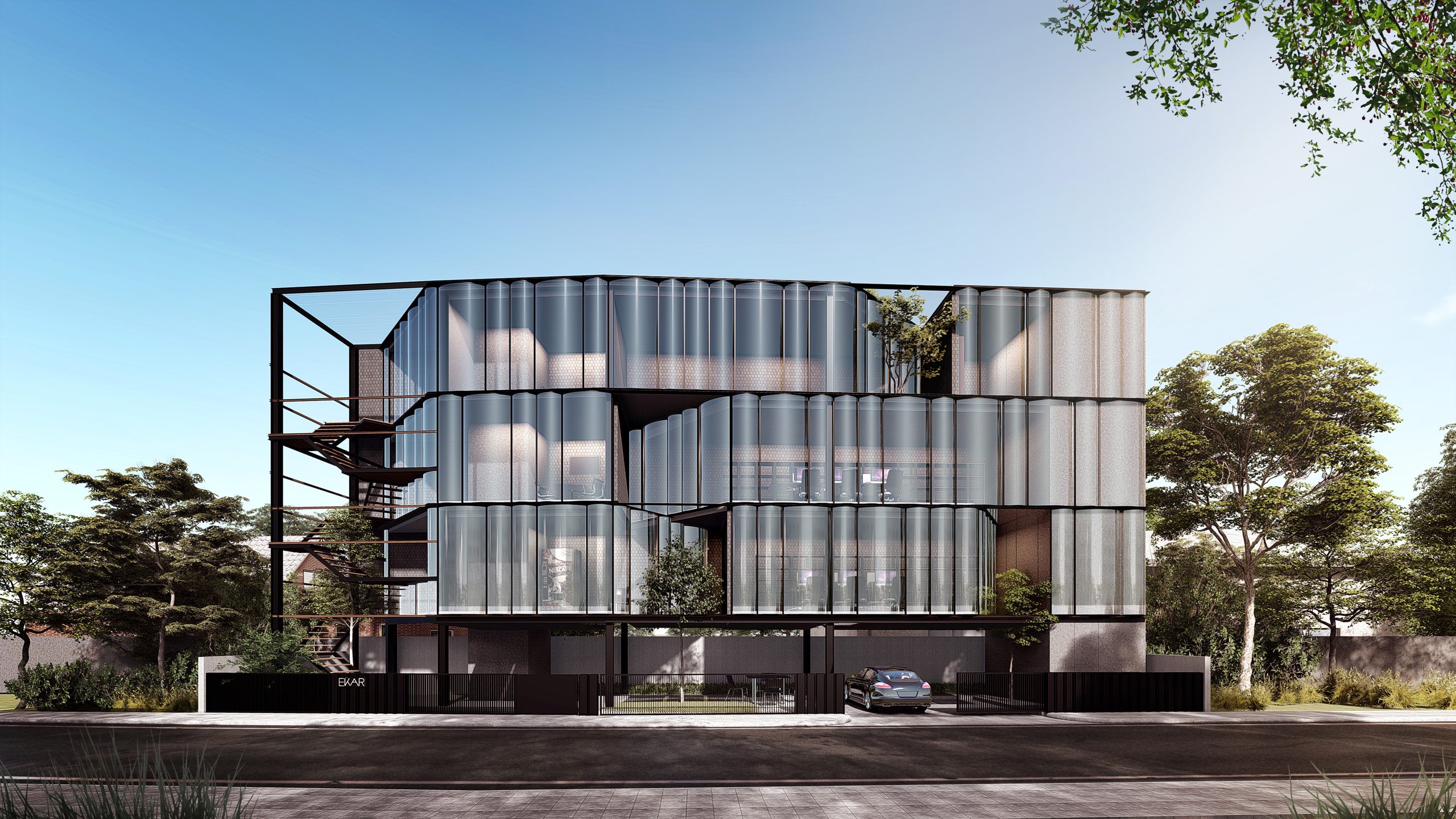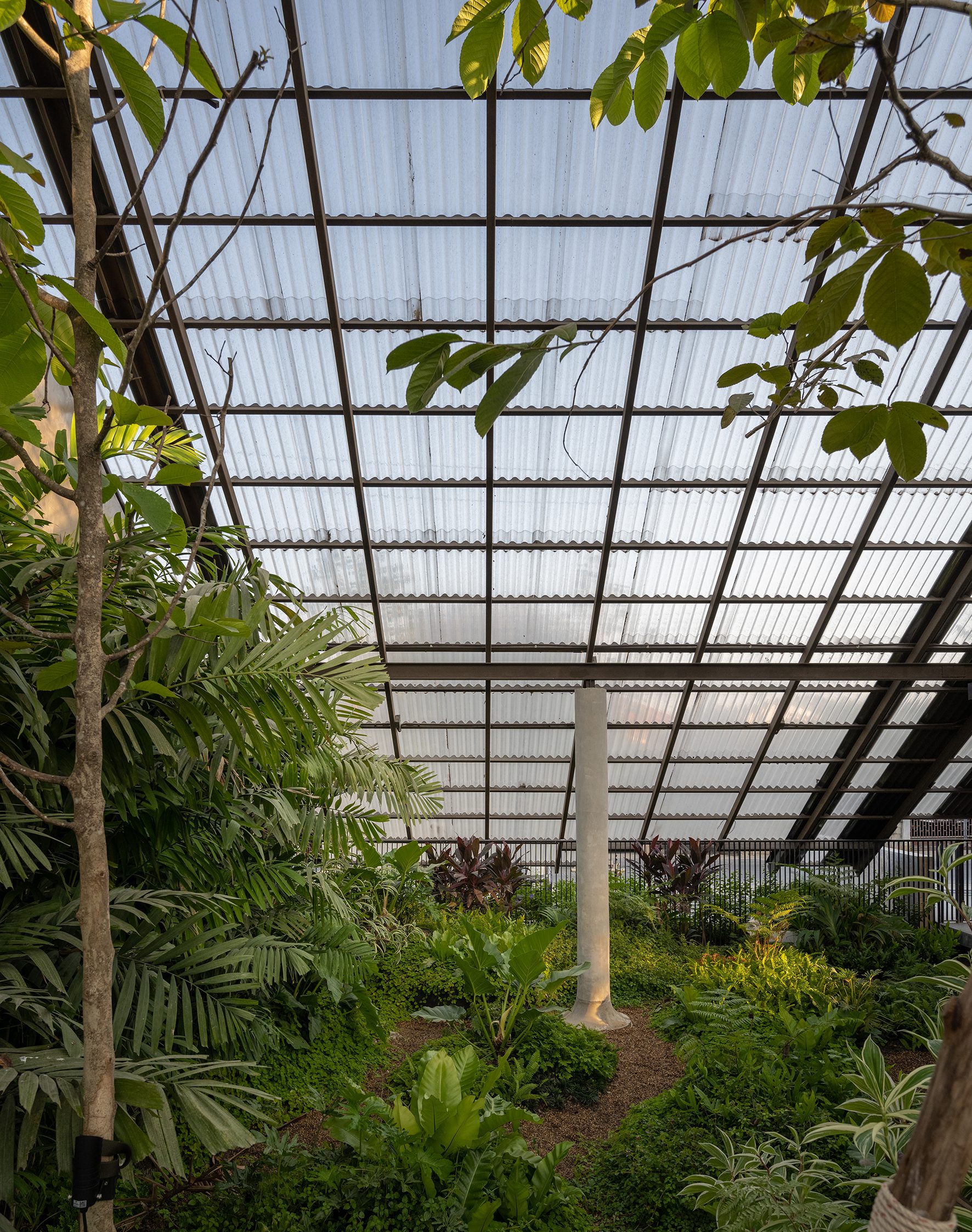EKAPHAP DUANGKAEW FROM EKAR ARCHITECTS PROPOSES THAT HUMAN IMAGINATION AND IMPRESSION OF ARCHITECTURE ARE AS ‘REAL’ AS TANGIBLE ENTITIES LIKE BRICKS, SOIL, AND SAND
TEXT: EKAPHAP DUANGKAEW
PHOTO COURTESY OF EKAPHAP DUANGKAEW
(For Thai, press here)
If architecture were created on the frontier that connects the two realms; one of truth and the other of imaginations
‘Truths are what the eyes see
Imagination is what the mind thinks
Images are perceivable through the travel of light
Feelings are perceptible through the travel of the mind’
Instinctively, art is one of humans’ few aesthetic appreciation. 150 years ago, in 1874, paintings were created from humans’ aesthetic attempt to document what they saw before their eyes with the most precise details, to create images that were the closet to reality as possible. There was, however, a group of artists, who were sarcastically referred to as the Impressionists, proposing something different with the belief that art should sit in the space between reality and imagination.

The painting “Le déjeuner sur l’herbe” by Eduart Manet created in 1863 was rejected by the jury of the 1863 Salon, prohibiting the work from being exhibited only because the image of a naked woman sitting by two fully clothed men during their picnic. From the jury’s opinion, nudity was only acceptable in historical and symbolic paintings, and the display of nudity in such a normal, mundane painting was considered off-limits.
Realistic paintings were altered to engage sentiments and feelings as artists tried to imagine different mixtures of lights and the various shades of colors they are made of, turning them into works of art that are perceivable to human eyes. The perceived images get transferred into signals that travel to our nerves and brain, before they are communicated into the physical form of brush strokes, painting on a canvas with colors too myriad to be distinguished by the naked eyes. Tens of thousands of strokes and dots of color are put together, and created is a realistic-looking painting. While it’s merely a way humans document mundane activities, paintings that were created invite humans to exercise their brain and mind to boundlessly imagine the newly generated imageries. Impressionist paintings are, therefore, the art of the beauty of lights and colors.
Even though bricks, soil and sand are tangible, and used for the construction of architecture to accommodate basic functional needs of humans’ dwelling, it is undeniable that the aesthetics of human living is a collective and primitive instinct of mankind. If architecture is the construction of ‘reality’ from different elements of imagination and feelings, hidden behind the construction of truth that spare no rooms for imagination to run free, how can it be considered ‘reality’ ?

Dog / Human by EKAR (2022) reveals the use of materials that help deviate the direction of light to lessen the accuracy of reality with the blurriness of the outside view, leaving a space for imagination and eliminating distractions and allowing users to spend time in the moment. If users wish to enjoy the outside environment, taking a step outside can lead them into an embrace of the surroundings.
Time passes and construction technologies evolve. Glass, as a building’s component, contributes as an instrumental medium—the lens that allow light to come through. The lens deviate light direction, allowing it to reach the furthest part of our eyes, and generating images on the retina. The perceived images are transferred to the optic nerves and then to the brain, which later translates the data into the image of the perceived object.

EKAR Headquarter by EKAR (2020)

KSG Headquarter by EKAR (2019)
Curtain walls serve, not as just a shell that wraps around a built structure for the sake of its beautiful outside appearance, but a medium that translates a message for building users to learn about reality differently.
EKAR’s works created between 2018 and 2022 attempt to study and experiment on this topic. If architecture can be perceived through the eye and the mind, glass can render realistic images, just like how human eyes can see or make the object disappear, disperse it into different shapes of lights and colors or deviate it into a distorted or blurred image.

Dog / Human by EKAR (2022)
When architecture is expanding its boundary to the realm between reality and imagination, ‘impressions’ that were once regarded as an artistic style may finally journey into a state where the reality of beauty becomes eternal.

